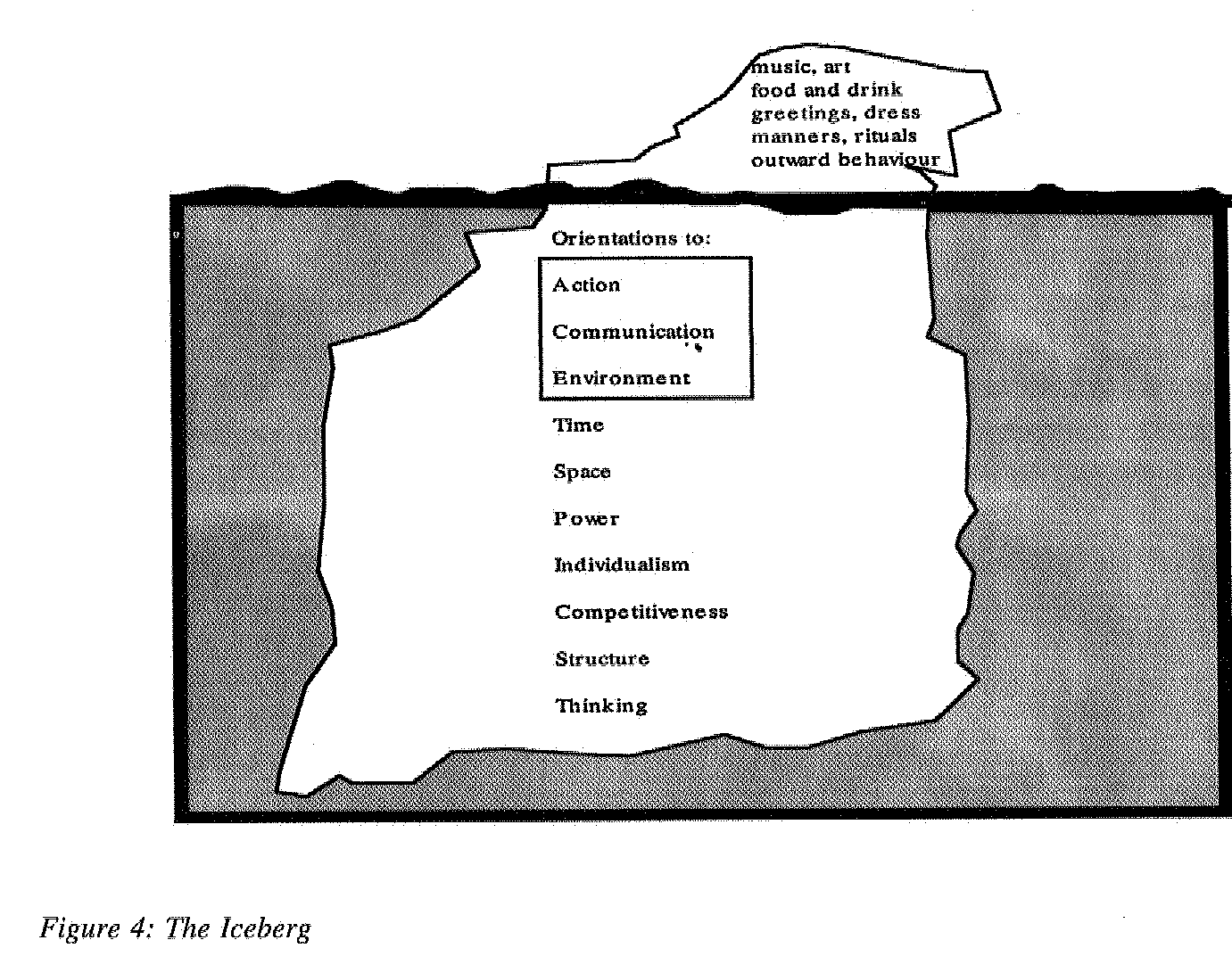
The Iceberg Theory suggests that just like an iceberg, culture is made of a visible and an invisible part (Edward T. Hall – 1973, 1976). The visible manifestations of culture are just the tip of the iceberg.
However, it is the lower, the hidden part of the iceberg, that is the powerful foundation of these visible manifestations.
Brake et al., a team of American management consultants, (1995:34-39) suggest a division of the iceberg as follows:
Laws, customs, rituals, gestures, ways of dressing, food and drink and methods of greeting, and saying goodbye… These are all part of culture, but they are just the tip of the cultural iceberg.
The most powerful elements of culture are those that lie beneath the surface of everyday interaction. We call these value orientations. Value orientations are preferences for certain outcomes over others. (Katan, 1999:29)
Class discussion
A. What elements of culture can you think of?
B. Look at the concepts in Brake’s version of the Iceberg Model. Which are the explicit and the implicit manifestations of culture?

Can you relate these concepts to your national culture? What picture of it, though highly generalized, can you build?
Think of your personal culture and compare it to your national culture. Might these two cultures conflict at times? How would you go about resolving such conflict points?
Look at the concepts again and think about how these concepts relate to the culture of the foreign language you translate from/into (provide examples from first-hand experience or from literature).
Which of the concepts below the waterline would you expect to come into play during the negotiation process with a prospective client?
3..1 – Individual work
Task 1
You are negotiating a translation with a member of the source culture.
Think of your expectations, attitudes, and possibly stereotypes, upon engaging in this business activity. Might they affect the process and its outcome? If yes, in what ways? Put down your thoughts.
Task 2
You are negotiating a translation with a member of the target culture.
Think of your expectations, attitudes, and possibly stereotypes, upon engaging in this business activity. Might they affect the process and its outcome? If yes, in what ways? Put down your thoughts.
3..2 – Pair/Group work
Task 3
Pair (or form a small group) with a co-student and discuss your thoughts on Sub-task 1 and Sub-task 2.
Do you share common attitudes and expectations?
Have you identified possible conflict points in your negotiation activity? E.g. working practices, modes of communication, words and their meaning, body language, eye contact, silences, etc.
How might you tackle those?
For example, why do the English queue for everything?
This relates to their approach to fairness, justice, order and rights. The rationale behind the queue is that those that arrive first should by right be served first or get on a bus first. Many other cultures simply do not queue in this manner, as it is not part of their cultural programming. lt is for the reasons of clarity that the Iceberg model has become so popular.